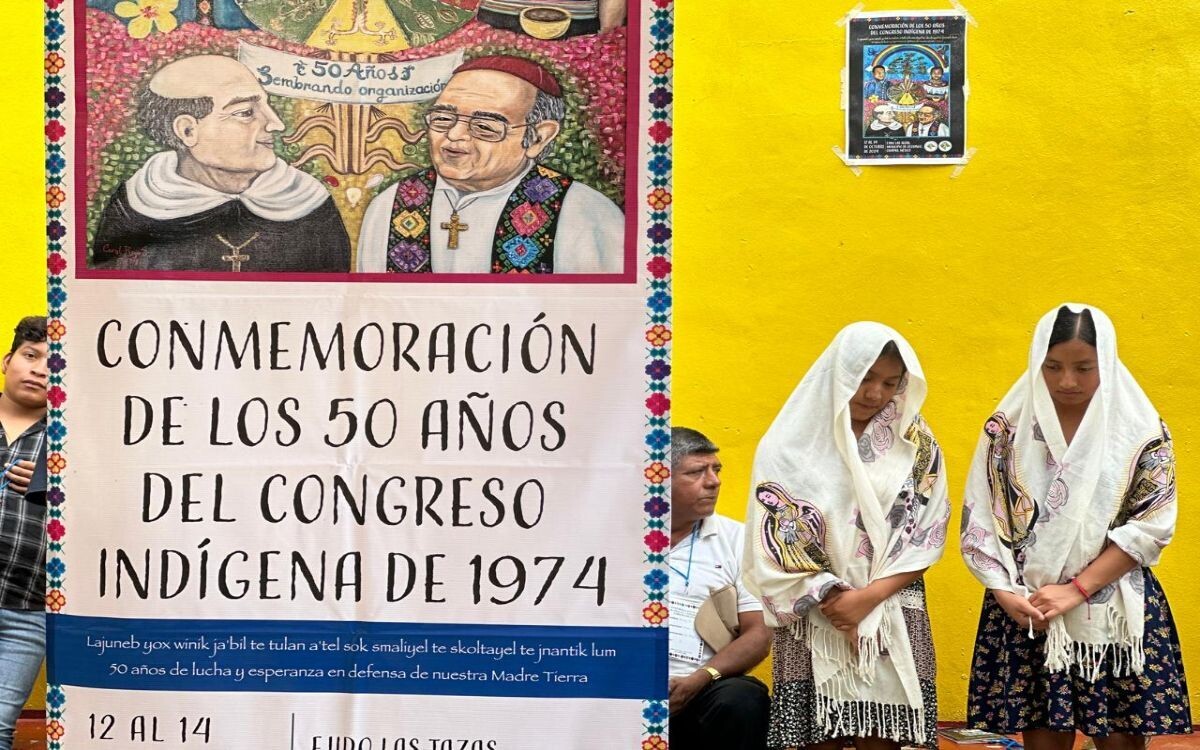
Almost a thousand inhabitants from different valleys of the Lacandon Jungle gathered in the community of Las Tazas, located in Ocosingo. For two days, they analyzed the issues they face related to land, health, education, and trade. Added to these are now the threats of organized crime, drug trafficking, migration, and divisions affecting the region.
Called by the organizations ARIC Union of Historical Unions and the Independent and Democratic, the meeting was to celebrate the 50th anniversary of the Indigenous Congress of 1974 led by Bishop Samuel Ruiz García. Half a century after that event, during the new meeting in the community of Las Tazas, in the area of the Valleys of the Lacandon Jungle, the participants recalled the history of the region and recognized the 1974 meeting as the trigger for organizing themselves and defending their rights as Indigenous peoples.
This year, the agreement was to promote reconciliation and unity in this region that was fragmented by political differences arising from the formation of the Zapatista Army of National Liberation (EZLN) in this region. For three days, the delegates from the valleys analyzed the events in the region, with the presence of civil society organizations and some elders who participated in the Congress of 1974.
After two days of deliberation, in the collective diagnosis made by the hundreds of delegates from the communities, they highlighted their analysis of the situation of land and territory. The increase in migration of hundreds of young people from the communities was emphasized, which has had consequences on Indigenous identity, as well as the issue of the vulnerability of children and women's rights to inherit land.
In this regard, they agreed to develop a strategy to involve young people and children in the solutions, recognizing that they are the most exposed to the risks of the threats present in the territory. They also demanded that the Mexican State assume its responsibility and commit to implement preventive measures, create internal regulations that help materialize the agreements, and strengthen their spirituality in territorial alliances.
"With that unity, an organization will be generated as Tseltal Indigenous peoples (...) As Indigenous peoples, we remain alive and in struggle, and in this sense, we will witness those experiences that were front and center, and above all, building from this territory, these utopias that are not fading away, but remain present in the memory of each of us," explained the participants from the valleys.










